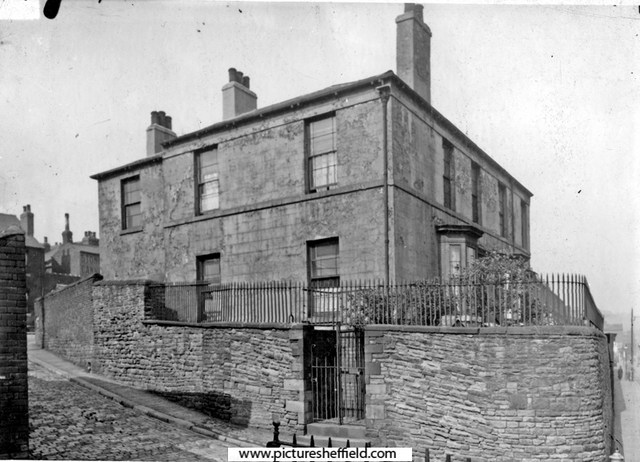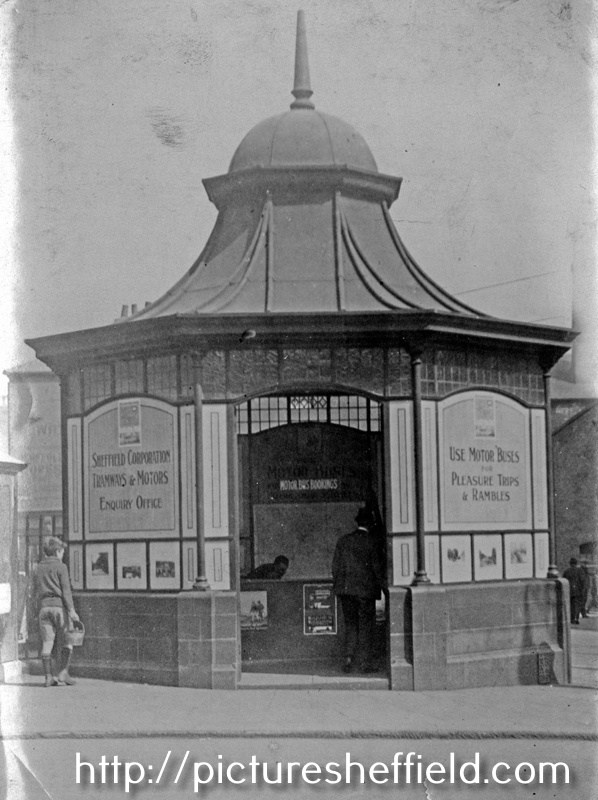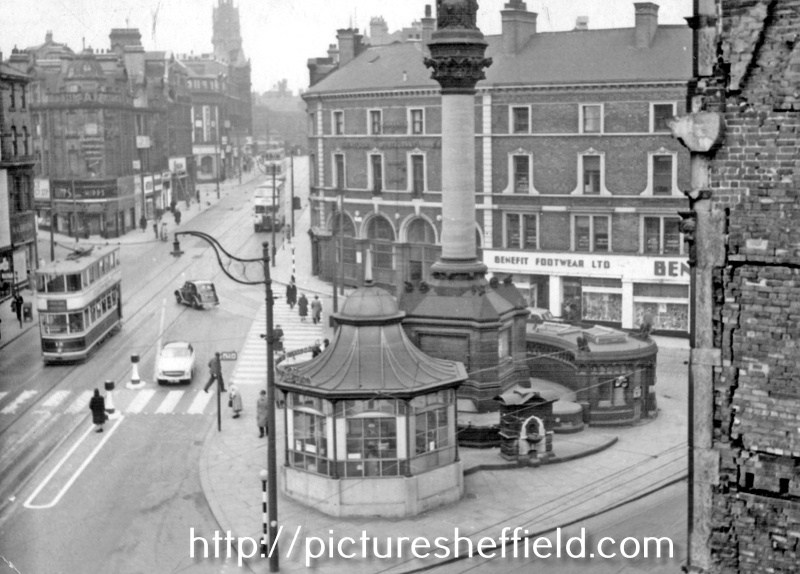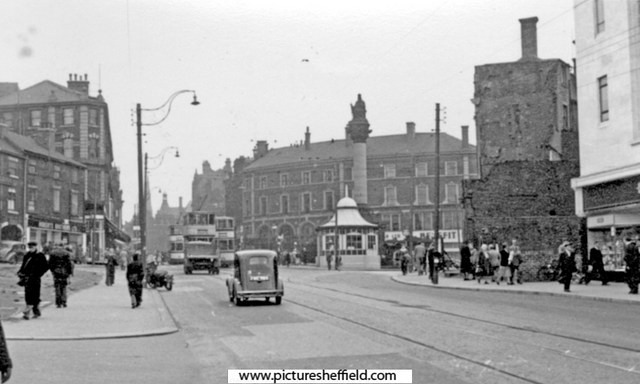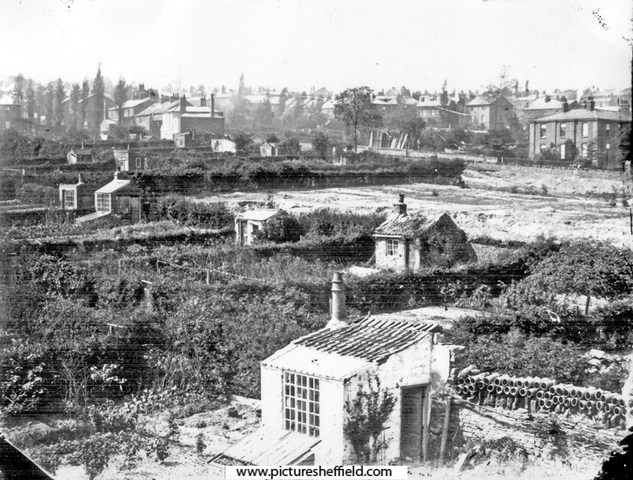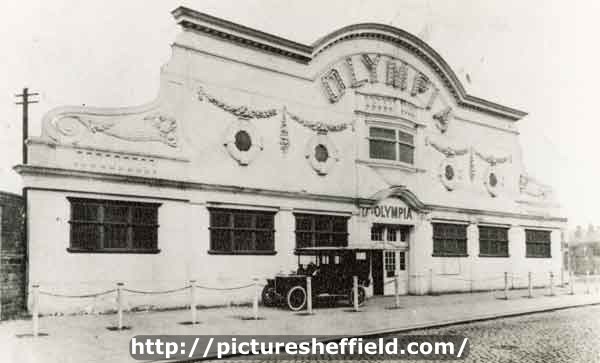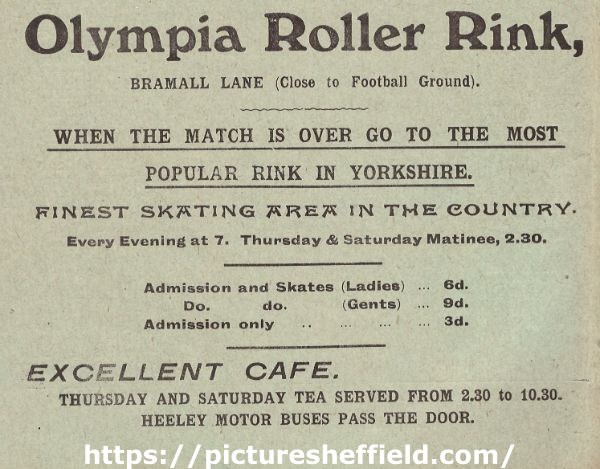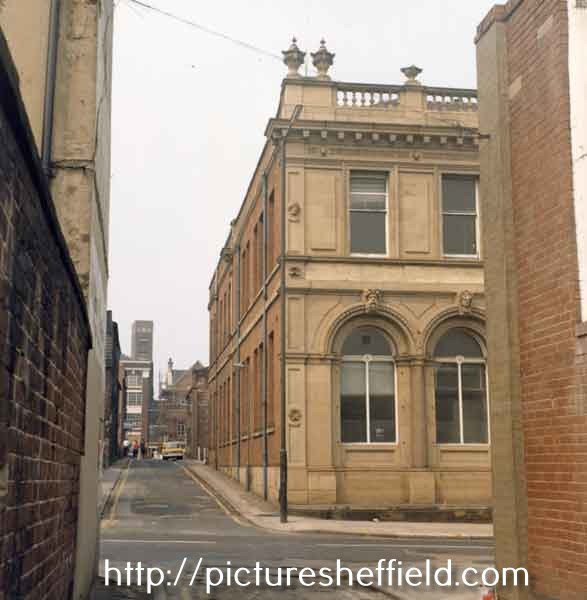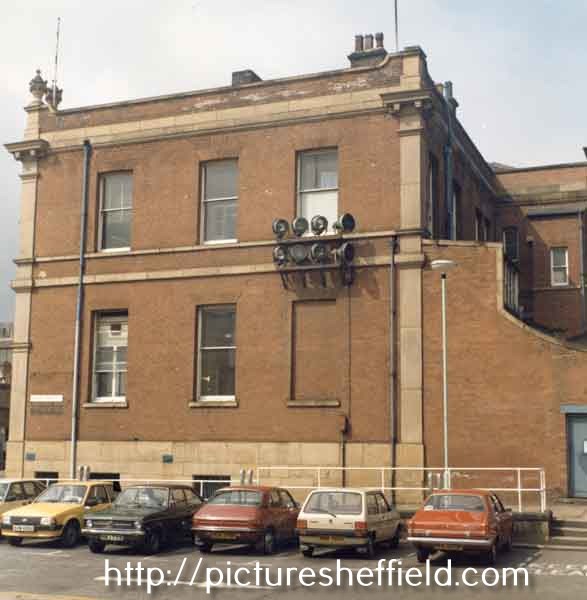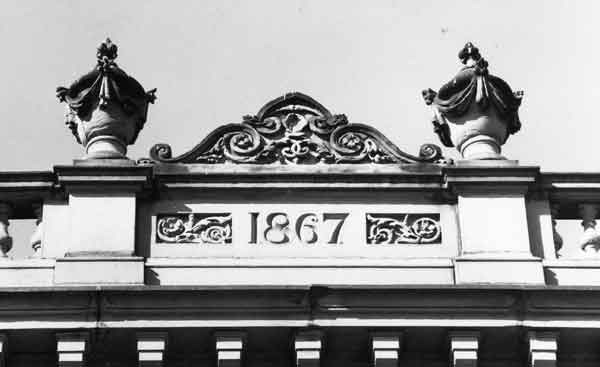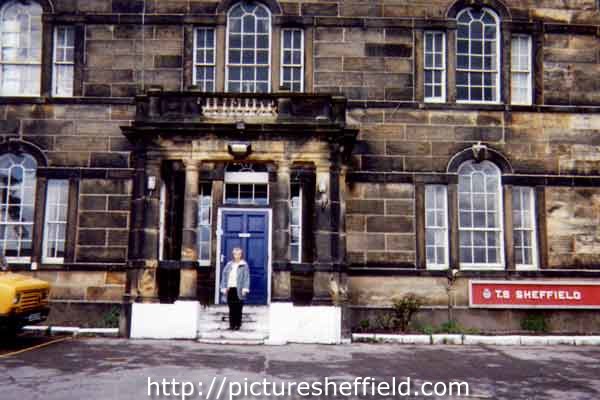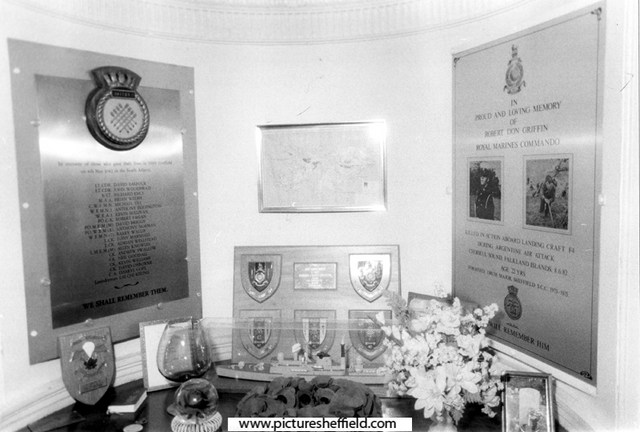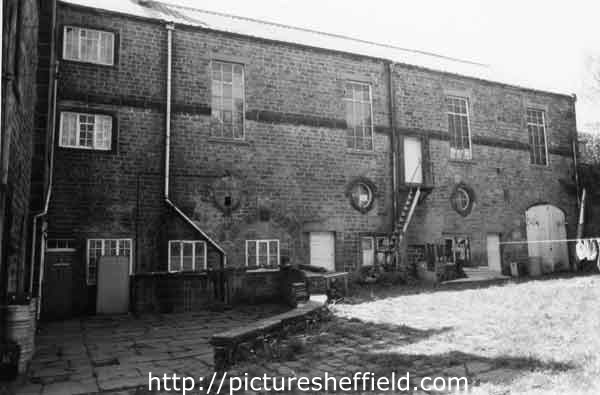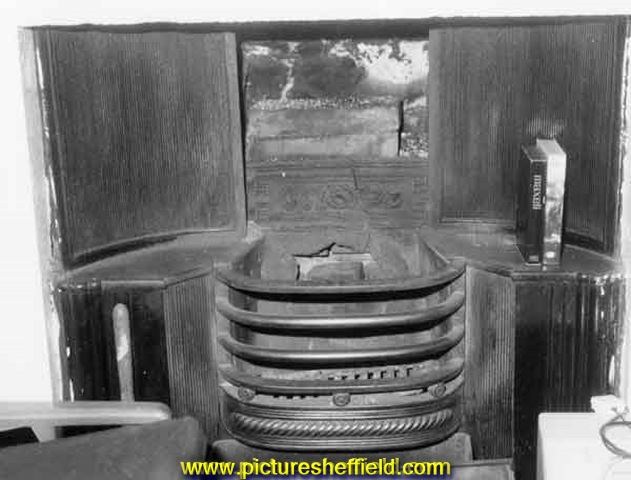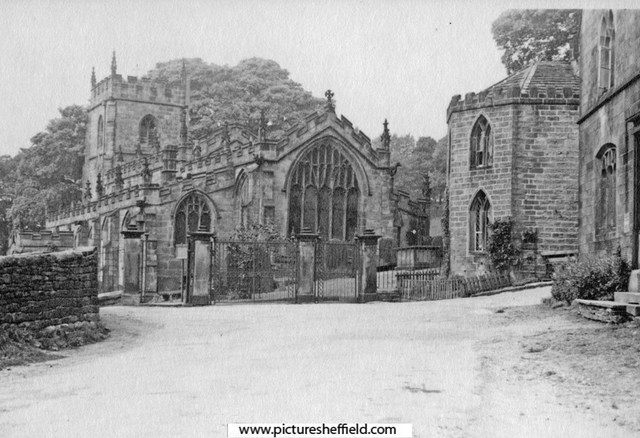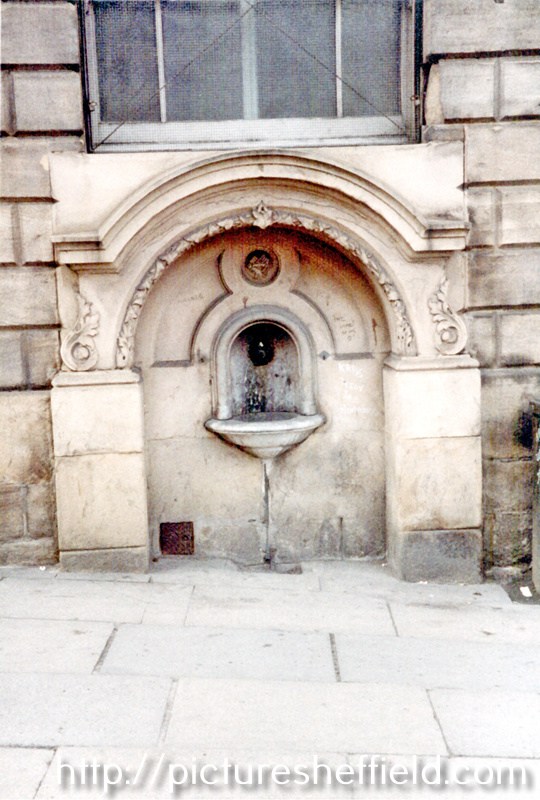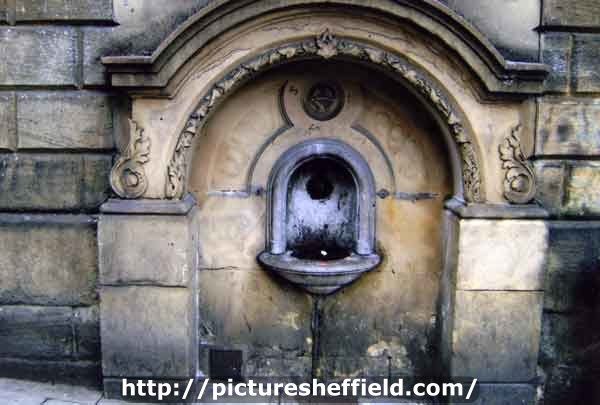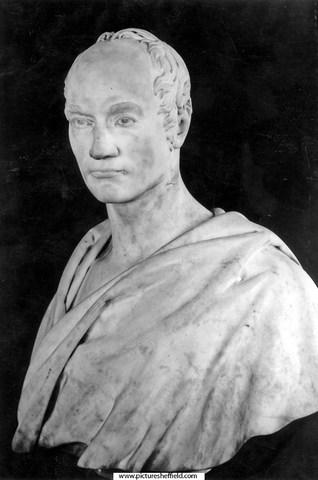Search the Community
Showing results for 'coal pit lane'.
-
Penistone Road from the junction with Barrack Lane (wall of Old Sheffield Barracks not Hillsborough Barracks) looking towards the Pigeon Lofts. s26386 Date: 06/10/1987. Penistone Road looking towards Balaclava Road and Barrack Lane (after the service station). 12th June 1967 The Old Barracks Infirmary (later used as flats) which stood at the junction with Penistone Road and Barrack Lane had at this time been demolished. Due to copyright restrictions only the thumbnail is available to view on Picture Sheffield website. https://www.picturesheffield.com/frontend.php?keywords=Ref_No_increment;EQUALS;s18659&pos=65&action=zoom&id=21320 Copyright. H. Ainscough.
-
Link restored: Old Barrack's Infirmary, Barrack Lane / Thirza Street. The old Barracks were on Penistone Road which was formerly called Low Road. s07451 Nos. 225 and 227, Penistone Road at the junction with Barrack Lane formerly the Old Barrack's Infirmary but being used as Flats. 18th February 1964. https://www.picturesheffield.com/frontend.php?keywords=Ref_No_increment;EQUALS;s18668&pos=1&action=zoom&id=21329
-

Moorhead Transport Enquiry Office
Ponytail replied to Sheffield History's topic in Sheffield Buses, Trams and Trains
Sheffield Corporation Tramways and Motors Enquiry Office, Moorhead, next to Crimean Monument. u03702 1927. https://www.picturesheffield.com/frontend.php?keywords=Ref_No_increment;EQUALS;v00942&pos=7&action=zoom&id=42733 Moorhead looking towards Pinstone Street including Nelson Hotel, Crimean Monument and Passenger Transport Enquiry Offices. Button Lane on extreme left.1952.s00388 Elevated view of Moorhead looking towards Pinstone Street, Passenger Transport Enquiry Offices and Crimean Monument, foreground, Nelson Hotel, in background. 1955. s18118 -
The Gill Cars set out into gardens for Thomas Rutherford in 1805; with streets and building lots plotted on in 1818-1819. Shows Broomhall Lane. https://www.picturesheffield.com/frontend.php?keywords=Ref_No_increment;EQUALS;arc04067&pos=71&action=zoom&id=93984
-
Gardens in the Broad Lane area. Plan of a close adjoining to the Broad Lane with the Gardens etc. formerly part of the said Close, and of another Close contiguous there to as it is now d[ivided] into Gardens the whole being the property of the Duke of Norfolk. 1768. One close entirely, the other partly divided into gardens; these are the closes later to be divided by Garden Street. Tenants names given. Shows 'Burying ground of the people called Quakers'. https://www.picturesheffield.com/frontend.php?keywords=Ref_No_increment;EQUALS;arc02095&pos=685&action=zoom&id=76290 The Close lately held by Thomas Hudson of the Earl of Surrey, divided into lots for gardens. 1782. A close on the south side of Broad Lane (numbered 1 on ACM/MAPS/SheS/1430); gardens listed with measurements. https://www.picturesheffield.com/frontend.php?keywords=Ref_No_increment;EQUALS;arc02094&pos=684&action=zoom&id=76288 A map of a Close belonging to the Duke of Norfolk now subdivided into gardens, and late under Lease with the Golden Cross in Sheffield. 1777. The second close as shown in ACM/MAPS/SheS/1532a, now entirely divided into gardens; numerical list with tenants names, descriptions and measurements; both these closes may be seen also on ACM/MAPS/SheS/1534. Shows 'Burying ground of the people called Quakers'. Shows the proposed route of Garden Street. https://www.picturesheffield.com/frontend.php?keywords=Ref_No_increment;EQUALS;arc02093&pos=683&action=zoom&id=76286
-
Gardens in the Ponds. Gardens let to sundry persons by the Pond Forge Co., [Pond Street, 1783] https://www.picturesheffield.com/frontend.php?keywords=Ref_No_increment;EQUALS;arc04205&pos=1415&action=zoom&id=105170 A plan of several gardens in Pond Lane held by sundry persons of the Duke of Norfolk, and a plan of the course of the pipe conveying water from the Bath through them to the White Lead Works, [1777] https://www.picturesheffield.com/frontend.php?keywords=Ref_No_increment;EQUALS;arc04203&pos=1413&action=zoom&id=105138 A plan of part of the Ground before the Bath Garden in Pond Lane. 1772. Property west of Pond Street, showing part of the [Pond Street Cold Bath] and its garden. https://www.picturesheffield.com/frontend.php?keywords=Ref_No_increment;EQUALS;arc03131&pos=903&action=zoom&id=98127 A plan of several gardens in the Pond Lane held by sundry persons of the Duke of Norfolk. 1777 Property between Pond Street and the Tilt Dam. Plots numbered and listed with tenants, yardages and short descriptions. https://www.picturesheffield.com/frontend.php?keywords=Ref_No_increment;EQUALS;arc03134&pos=906&action=zoom&id=98131 A plan of the Tenements, Gardens and Ground in Pond Lane held of the Duke of Norfolk by William Webster and by T. Marshall and E. Challoner, [1775] Tenements on the west side of Pond Street, but including the Fish Pond and garden on the east side; buildings, coal yards, etc. named; an 'ancient watercourse' marked, and proposed street widening. List with tenants. https://www.picturesheffield.com/frontend.php?keywords=Ref_No_increment;EQUALS;arc03132&pos=904&action=zoom&id=98129 Plan of the Houses, Garden and Ground in the Ponds held of the Earl of Surrey by James Matthew man. 1780. https://www.picturesheffield.com/frontend.php?keywords=Ref_No_increment;EQUALS;y09228&pos=669&action=zoom&id=63622
-
Hanging Bank Gardens measured for Thomas Harrison. 1809 https://www.picturesheffield.com/frontend.php?keywords=Ref_No_increment;EQUALS;arc03928&pos=76&action=zoom&id=101793 Shows Watery Lane and road to Crookes Moor.
-
Allotments off Hanover Street, looking towards Broomspring Lane, 1855-1860, photographed by Arthur Hayball from his house in Hanover Street y00521
-
The following extract reveals how some Sheffielders had "Gardens" not always attached to their dwelling but a separate garden in the suburbs where they enjoyed relief from their work and grew flowers and produce to feed their families but sadly, were gradually being destroyed as Sheffield expanded in the middle part of the 1800's. Extracted from Reminiscences of old Sheffield, it's streets and it's people. edited 1875 by R. E. Leader from articles and Letters from The Sheffield and Rotherham Independent 1872/3. Page 145-153. CHAPTER VII. Old Sheffield Gardens. Present — Messrs. Twiss, Leighton, Everard, Wragg, Leonard and Johnson. Period— A.D. 1873. We were all sitting, one charming and warm evening, in the cosy summer-house of our friend Twiss. It was not in the garden attached to his residence, for he dwelt in the recesses of a dingy town, with a melancholy grave-yard for his outlook. But he was old-fashioned enough and wise enough to stick to the traditional Hallamshire custom of keeping a small garden-plot out in the suburbs, to which he could retire in the intervals from business, in which he could delight his horticultural soul, and, above all, which gave him an object for a walk after the toils of the day. It was a treat to see him in the fading twilight of a summer night, wending his way back to his sooty brick dwelling, laden with rural spoils, with which to enliven it — a huge "posy" of lupines and sweet-williams, and pinks, of cabbage-roses and pansies, and other good old English flowers, now despised and rejected, in obedience to the "bedding out" mania, for masses of scarlet geraniums and yellow calceolarias. Nor was he above bearing through the crowded streets products of even a humbler kind — big-headed cauliflowers or juicy lettuces, or largehearted cabbages — or some other palatable form of the much embracing genus "greens." Of course, being in the country — so to speak, though we were by no means out of the reach or out of sight of the smoke — our talk was of country things. One told how his grandfather, a great garden-smith, used to delight to get away from his shop to his little plot down Bramall Lane way — a walk among the hedges and through pleasant shady lanes; and another remembered being sent, in 1825, with a message to Montgomery, who had retired from his sanctum upstairs in the dingy Hartshead— over the coal place, and with depressing outlook on to brick walls and dilapidated roofs — to refresh himself for a time among the polyanthuses and daffodils of his garden, between Glossop Road and Leavygreave. That is where Hounsfield Road is now, for most of the space from Glossop Road to Brook Hill, belonging to the Water Company, was divided into these little plots. The town in those days was literally surrounded with groups of neatly-partitioned gardens. The late Mr. Edward Baines (M.P. for Leeds from 1834 to 1841) was accustomed to remark that the multitude of small, nicely-kept gardens in its suburbs was a characteristic of Sheffield, in which it was in advance of any other large town he knew. Look which way you would, or go in what direction you would, there they were. Besides the celebrated gardens in the neighbourhood of Hanover Street, there were similar gardens higher up Broomspring Lane and Wilkinson Street, and on the site of the Baptist Church on Glossop Road, and up to Northumberland road and opposite Mushroom Hall to Westbourne, Mr. Cadman's house, near which are a few remaining. From Glossop Road the Water Company's land extended into Brook Hill, and the gardens on this piece were always considered some of the best in the town. Near to and behind the late Ald. Saunders' house in Brook Hill, were gardens, behind which were others, reaching down by Brightmore Street, Bellefield Street, Portmahon, Bedford Street, and Waterloo Houses (commenced building by the father of James Levick, the dahlia grower, and finished by his mother), to the River Don. Then on the opposite side of the river, the site of Neepsend brewery, and right up to the wood and Woodside Lane; also on the opposite side of Woodside Lane, under Pye Bank, to the mouth of the railway tunnel. Harvest Lane, and Green Lane to Colson Crofts were occupied in a similar way; and another plot of small gardens is now on the site of the old Midland Station in the Wicker. These as originally intended, were to have been the basin of the Sheffield Canal. On the opposite side of the road, between Twelve o' Clock Wheel, or the Albion Ironworks, and the Norfolk Bridge, was another lot of gardens, destroyed about 25 years ago. There were small gardens in the Park, part of which is St. John's churchyard. There were some others at Skye Edge, down to Duke Street, or the Intake road. At the end of Clough Lane, down to the river Sheaf (Sheaf Gardens), were gardens considered second to none in the neighbourhood, some containing good double houses, not like those in Club Gardens, Sharrow Lane. From these were others extending across Suffolk Road, down to Harmer Lane. There were also the gardens just destroyed at the end of Bramall Lane, opposite Sheaf House, on the path to Highfield; and about 25 years ago was destroyed a plot of gardens that had extended from the top of Young Street to Broomhall Street. There were some others that have disappeared, to make room for buildings about the General Cemetery and Broomhall Mill. "When all the above gardens were in existence," said Mr. Wragg, "I believe one out of every three working men had a garden, which he cultivated more for pleasure than profit. This was far better than his present gambling propensities; but further, there were not a few instances in which the working man's garden assisted him to clothe his family, or to pay off debts, unavoidably contracted, by the sale of the fruit from his pear or apple trees. Now, there are no such places for a working man to resort to in his spare time, except for those who are members of some Land Society outside the town. It is said he may resort to the Library, or peruse his book at home; that he can amuse himself by holding communication with the great men of past ages; but all such talk is a delusion. Bodily toil and mental discipline will not go hand in hand, or blend. The garden plots remaining are, alas, but few; they may be almost counted on the fingers of one hand, some under the wood at Hillfoot, and some in Neepsend Lane to the river; the Water Company's piece, Hanging bank, and in the flat below the site of the old dams, commonly called Upper and Lower Canada; some around Younge's Silver Rolling Mill; some, comparatively speaking recently made, between Hyde Park and the Manor. There are a few left in Ecclesall Road. In Sharrow Lane are the Club Gardens, that have always been remarkable for the number of houses occupied by the tenants. Fenton Ville gardens and South View gardens, extending down into the Abbeydale road, are noted for the number of their florists, the most successful of whom is William Allsebrook, famous for rearing new kinds of polyanthuses. I am sorry to say I believe all these gardens will soon be like the others mentioned — demolished." Leonard: Yes, they are fast being engulphed by the omnivorous builders; and the robberies to which they are exposed are a great discouragement to the enthusiastic amateurs who compete at pink shows, or dahlia contests, or who strive to raise gigantic gooseberries, to be weighed at Florists' Inns, and celebrated with a supper. Let us hope that this annihilation of garden allotments does not indicate that the healthy delight in floriculture that has always been a characteristic of Hallamshire is dying out. You may still see the grinder returning from a pop visit to his little country delight, laden with early spring rhubarb, or with roots of celery, according to the season of the year; and freehold building societies have altered life so much as to give working men an opportunity of having their homes standing in their own gardens, which is not only healthier but handier. A member of our company mentioned the splendid bed of ranunculuses which a resident in one of the houses still standing opposite the top of Broomhall Street, used to show, and reminded us of the celebrated garden which the Staniforths, father and son, the eminent surgeons in Castle Street, had in the Grimesthorpe road, the present Gardeners' Arms being their garden house. Mr. Wragg recalled that kind, genial old man, Edward Middleton, baker, who kept the Barleycorn Tavern, in Coalpit Lane — the most obliging of neighbours among amateur gardeners. The vicinity of Hanover Street used to be marked out like a chess board by these gardens, and Middleton had one, near the corner of Broomspring Lane and Hanover Street. The top part of it forms now part of Hanover Street, and the bottom extended behind the houses of Mr. Owen, the draper, which face to Broomspring Lane. Afterwards, he showed his skill in one of those previously spoken of, on Glossop Road — where Charles Thompson's coach premises are now, then belonging to the Water Company — having gone there by reason of his neighbour, John Burton, the Quaker, buying a garden for him. Mr. Wragg believed that the last possessor of Middleton's garden, near Mr. Owen's houses, was the late Mr. Bennett, grocer, Church Street, elder brother of the present Mr. Bennett, who succeeded him in his business. Joshua Wilkinson had the next garden above, and he sold it to William Melluish, the last survivor among the many South Devon Militiamen who settled in Sheffield after the disbanding of the regiment. The garden above was Mr. Swift's, the father of Mr. G. E. Swift, in the steel trade, in Blonk Street. At the front of Spring Lane was Samuel Padley's (a Quaker), the father of Mr. Padley, of the firm of Padley, Parkin, & Co., silversmiths, in Watson's Walk. The late Mr. Bramhall, one of the managers of Messrs. Rodgers and Sons, and Mr. Staniforth, grocer, of Broad Lane, had gardens hereabouts. Mr. Roger Brown was the last who had Mr. Staniforth's. Just below, and behind Josh. Ingle's house, an old woman of the name of Savage had a garden, and did all the gardening herself. The late Mr. B. Hinchcliffe had a garden in this piece, and there is a tradition that the late Mr. John Holland occupied a garden here, but his nearest friends are incredulous about it. The story is that an old man, a relative, did the gardening for him, in which case it may possibly have been his uncle Amos. A file cutter, afterwards a silver stamper, named William Hague, had the first garden opposite old Mrs. Savage's. Being a frugal man he saved money, by means of which he built the houses at the bottom of Broomspring Lane, and opened a grocer's shop at the corner. The last person who had Mr. Hague's garden was Mr. Worth, the joiner and builder. Mr. Turner, the Sheriff's officer in Campo Lane, had also a garden; so had Mr. Taylor, of the Commercial Inn, Haymarket, now destroyed by the making of the new street into Norfolk Street; and Mr. Theaker just by, for many years the only coffee-house keeper in the town, had two up to the time of their destruction. James Levick, the ivory merchant, of Pinstone Street, was a well-known dahlia grower. He raised from seed a dahlia which was named "Levick's Incomparable," the beauty of which was that the petals were tipped with white in so peculiar a manner that many persons supposed they were subjected to some chemical process. But this peculiarity was not at all of regular occurrence; and many growers, disappointed by obtaining flowers without the white tips, poured out their woes in the "Floricultural Cabinet," then published by Mr. Ridge, in King Street, and conducted by Mr. Harrison, Lord Wharncliffe's gardener. They besought Mr. Levick to give them details of cultivation, and in reply, he could only say that the flowering was very eccentric, sometimes he produced the flowers with tips and sometimes without; and Mr. Paxton, having one year obtained most beautifully tipped blooms, set a large quantity the next year in most conspicuous places, and had not a single bloom tipped. The secret seemed to be to check a too luxuriant growth of the plant. Mr. Levick also produced a handsome crimson dahlia — "Commander-in-Chief" — which was honoured with a coloured engraving in the work named. Mr. Thomas Tyson, who kept the "Fountain," in Coalpit Lane, was a distinguished florist, and a man evidently much respected by his brethren, for "his funeral was attended by the florists of the town, who strewed his coffin with a profusion of most beautiful flowers." Club Gardens, as has been said, were remarkable for the number of the houses occupied by the tenants. In one house resided the late Mr. Paul Smith, a well-to-do-man, said to have been worth six or eight thousand pounds ; but he was induced to enter into partnership with some firm which shortly afterwards failed. The creditors seized all the property of Mr. Smith to pay the debts of the firm, so he became a poor man, and died a recipient of the Iron and Hardware Pensions. Another resident in these gardens was the late Mr. Charles Unwin, of Westbar, the broker. Previously he had a garden in Brook Hill, in the piece behind Mr. Brightmore's house. After the death of Mr. Thomas Nowill, Mr. Unwin bought his garden, and there he resided at the time of his disastrous fire, in which some thousands of pounds worth of his property and stock-in-trade was destroyed. It gave such a shock to his nervous system that soon after he died, about 16 or 18 years ago. Mr. Unwin was a native of Anston, and originally was a labouring man; but he turned sawyer, and was a very hard worker. Another native of Anston was the late Mr. Henry Broomhead, the solicitor, whose father was a tanner. Some of the best gardens in the neighbourhood were the Sheaf Gardens. About thirty years ago the late Mr. William Stratford had a garden that was remarkable for the neat manner in which it was kept by Mr. Stratford himself; and his tulip bed was the admiration of all beholders. Hanging Bank Gardens, when in existence, were notable for the number of those tenants who exhibited gooseberries at shows ("berry showers") the chief of whom, and the most successful, was the late Robert Green. He resided in one of the houses, probably built by himself or a former tenant, since it is not the work of a mason. He had another garden lower down, but one or two others intervened, and up a walk nearer where the stream of water ran from the Water Company's dams. From his success as an exhibitor of goose-berries he obtained many copper kettles as prizes. When the time of exhibiting was about to take place, his garden had to be watched from the Saturday night to Monday morning to prevent his trees being stripped. Green was a spring-knife cutler, and worked for the late Mr. B. Micklethwaite, whose workmen were very respectable, honourable, and upright. Amongst them there were none of the coarse jokes, indecent conversation, or unmeaning, empty, and profane jests, so common among workmen in the workshops of the present day. They talked when they had something to say, and years after, when one would casually meet another in the street it was always with kindness and respect, something like one gentleman meeting another. About 40 years ago, in one of the gardens near what is now the top of Fawcett Street, just before Bellefield house, was a whitewashed house, with sash windows, in which resided the late John Milner, who in his day was said to have been one of the best, if not the best spring-knife cutler in the trade, and notable for his great powers of debate. He was born in Spring Street or the immediate vicinity, and in his youth or childhood was a companion of the late Mr. Wm. Stratford. He was the last survivor of his early associates. When John Milner left the house it was not afterwards occupied. It dwindled away — lads first broke the windows, and next it gradually disappeared. In Watery Lane was a very good house standing back in a garden. For some time it was unoccupied, and from being untenanted it got into a dilapidated condition. A few* years ago, a portion of one of its walls fell on some children, and one of them was killed. The last occupier was a person of the name of Ross, who left the town and afterwards died. Ross was a man who was going to get every one his fortune. People who believed they or their ancestors had been deprived or dispossessed of property flocked to him in crowds. Somewhere in the vicinity Ross had a rival, a woman, who had two strings to her bow, for in addition to being a fortune-hunter she was a fortune-teller. The market gardeners' grounds ranged, for the most part, from Neepsend and the Old Park Wood to Hall Carr. There was George Stubbing, whose garden, kept before him by Mr. Thornhill, who had a cook shop in the Hartshead, extended from Woodside Lane to Old Park Wood, being bounded on the north by Cook Wood. Part of his garden in Harvest Lane is now the depot of the Board of Health, while the southern part, including the site of the original house, was taken for the Manchester Railway. Before beginning a garden on his own account, Mr. Stubbing had been in the service of Dr. Webb, of whose garden in Harvest Lane he had charge. There was James Andrews, who had an orchard at Neepsend, where the Neepsend Nursery now is; and the orchard in Harvest Lane of William Burgin, now displaced by the various works in Mowbray Street, was one of the finest sights in the town in spring time. Who does not remember, too, that other orchard on the slope below Burn Greave, which everybody would stop and admire even so late as 1855-60? There were two other Burgins besides William, but he was not related to them. They were brothers, George and Jonathan. The former was the last inhabitant of the Clay's house, in Bridgehouses; the latter had a fruit shop in Bower Spring. From Pitsmoor Church to Burn Greave, and to where the Railway crosses Tom Cross Lane, market gardeners had their grounds, and a pleasant walk it was through them, for the Burngreave Road and Rock Street were not made then. The orchard and grounds between these two roads, where Catherine Street now is, were occupied long ago by John Pearson. His family were table-knife cutlers at Neepsend, but he was fonder of gardening than cutlering. Afterwards the land was in the hands of Mr. John Garnett for many years. Then it got into Chancery and was in a lost-looking state until it was built upon. Mr. Garnett removed to the land between the Wicker Congregational Church and Carlisle street, Gower Street having been made across it near to where what was his house still stands. Gardens of similar kind extended to Hall Carr Lane, where, not many years ago, gypsies might sometimes be seen. On the other side of the town was Mr. Hatfield's nursery, on the Glossop road, adjoining Wesley College, which often attracted passers by its beauty. From gardens and gardening we got to talk generally of the changes that have taken place in what may be called the nearer suburban surroundings of the town. The youngest member of our friendly group could, we found, call to mind surprising changes; as for the eldest, the wondrous transmutations to which he could bear witness were endless. Within a very small radius of the Parish Church — say Carver Street Chapel — he had walked in green fields, or traversed woods whose sites are now occupied by whole colonies of houses, and it was told how tradition affirmed that a resident at the top of Coalpit Lane had shown his children Judge Wilkinson's stacks burning at Broomhall from the field on which Carver Street Chapel now stands, then called "Cadman's-in-the-fields." That was in 1791; a more recent story was that in 1817, two ears of wheat were plucked in a field at Roscoe Place, each seven inches long. One of them contained 69 and the other 70 corns. Our old friend's description of Broomhall Spring, which he remembered when he was about 10 years old — in 1791 — was very interesting. "I very well remember," said he, "coming with my father through the wood called Broomhall Spring. It extended from about Wilkinson Street to Broomhall Park. It was full of very fine oak trees, with very little underwood, and the turf was soft like that of a park. I remember very well seeing the trees and the grass, and the sunlight gleaming among them. Not long afterwards the wood was cut down. The Government was then wanting a great deal of oak timber for ship-building, and the trees in Broomhall Spring were sold for that purpose. The roots were dug up, and the land turned into the gardens of which we have been speaking." The inscription on the stone over the trough was still there up to 1836. It ran: — "Spring Garden Well. To the public use, by the Rev. James Wilkinson and Philip Gell, Esq. Freely take — freely communicate — thank God," its site is now enclosed in the garden of the house at the corner of Gell Street and Conway Street.
-
A further account of the attack by the rioters at Broom Hall in 1791. From "Reminiscences of Old Sheffield, it's streets and it's people.", edited 1875 by R. E. Leader from letters and articles in the Sheffield and Rotherham Independent 1872/73. Pages 64-67. "Twiss: There is another good story of the stocks, in connection with old Justice Wilkinson. A little girl in the street was incited by some mischievous fellow to go up to a gentleman walking along, and to say: "They burnt his books, And scar'd his rooks, And set his stacks on fire " — the well-known doggrel relating to the rioters' attack on Broomhall. The child innocently went in front of the gentleman and, bobbing a curtsey, lisped out the lines. "What, my dear?" asked the Vicar — for it was none other. The child repeated it. "Yes, my dear," said he, "come along with me;" and leading her by the hand, took her to the stocks, to her great distress. Leighton: Justice Wilkinson had a patriotic sympathy with the fathers and mothers of illegitimate children, from an idea that, considering the drain of the war, it was a public benefit to add to the population. Some sayings of his, a little too broad for reproduction in print, are yet told by the choicest of our old story-tellers. Leonard: It was in 1791 that that attack on Broomhall was made. The ringleader, one Bennett, was executed for it at York. Everard: I have always understood that the individual executed was a poor, half-witted young man, whom the mob purposely incited and pushed forward through the library window, to commit the incendiary act of setting the books and papers on fire. Had the event taken place now, the unfortunate lad, instead of being hanged, would in all probability have been sent to an asylum during her Majesty's pleasure. This case, I have been told, produced at the time such an impression on the public mind as led to the doing away with the law, or custom, of giving" blood-money." I say law or custom, because I have heard it denied that any such law was ever enacted by the British Parliament. As matter of fact, however, it must have possessed some shadow of legal authority, as it was a thing practised in two instances, at least, in "Old Sheffield;" and after the Broomhall riot the practice ceased to exist. My father was one of those who, out of curiosity, went as an on-looker to that scene of outrage, but, believing that the military would soon put in an appearance, he began to make his way homewards. In Black Lamb Lane (now Broomhall Street, but then a narrow country road), his retreat was, however, intercepted by the approach, at full speed, with noise of jingling scabbards, mingled with oaths and curses, of a detachment of cavalry. He jumped over the field wall and lay hidden until they had passed. Then, concluding that there would certainly be another troop soon following, he decided to go down the lane (now Hanover Street) towards Sheffield moor, and by that roundabout way get home. He had not, however, gone far in that direction, before another party of soldiers made their appearance, headed by the Colonel and Justice Wilkinson himself. He had then with agility again to perform the climbing and hiding feat, and thus managed to escape the dangers of his nocturnal ramble on that clear moonlight night. Leonard: It appears from the Sheffield Register's account of the affair that the cavalry in question consisted of a detachment of Light Dragoons, sent over from Nottingham "in consequence of an application to Government for them; "and it seems very probable that if the unwonted arrival of the soldiery had not suggested rioting to the mob, none would have taken place. At the Cutlers' Feast that year the guests "were almost frantic in their expressions of approbation of Mr. Wilkinson's conduct;" and the Mistress Cutler's party on the following day, "with that rapturous joy which females only elate in a cause worthy of their sex can express, not only drank his health * ' • but nothing less than acclamations of applause would satisfy their ardour and zeal." Twiss: There are other anecdotes about Justice Wilkinson's doings as a magistrate which may as well be mentioned in connection with the old Town Hall. Being called upon on one occasion to arbitrate between a quarrelsome husband and wife, he ordered that they should be locked up together until they could agree. The discipline proved efficacious, for, after a show of obstinacy, the refractory couple came to terms, and announced their contrition by knocking upon the walls, as had been arranged. Another is this: A lady, having quarrelled with her servant, was required to appear before the Justice. She refused to go before " Old Niddlety Nod " (a nickname given owing to a peculiar shaking of the head caused by paralysis), and. had to be fetched by a constable. "So you refused to come before 'Old Niddlety Nod,' did you ? You are here now, however, and ' Old Niddlety Nod ' orders you to pay the servant her wages and the costs of the court." Leonard: That nickname reminds me of the description of Mr. Wilkinson given by one living who remembers him. "He was," said he, "a fine, venerable-looking old man; very stately, but rather palsied when I saw him. His head shook a little. He drove about in a large old family carriage with a pair of horses and Joshua Gregory, his clerk, used to stand behind like a footman. I was at school at Chesterfield when the rioters went to Broornhall and 'burnt his books, and scared his rooks, and set his stacks on fire.' My father sent me word what mischief had been done at the Hall. After Justice Wilkinson died, Joshua Gregory went into a tableknife concern. The firm was Wostenholni and Gregory, but it did not continue long." Page 90. "Twiss: In 1791, at the same time that Broomhall was attacked, the mob destroyed the doors and windows of the gaol and the house of Godfrey Fox, and liberated the prisoners. It was the prison for the liberty of Hallamshire, and the property of the Duke of Norfolk."
-
Olympia Skating Rink, Bramall Lane. https://sheffielder.net/2020/03/17/olympia-skating-rink/#:~:text=It opened on 7 October,be adapted for concerts%2C bazaars%2C
-
Olympia Skating Rink, Bramall Lane, opened September 1911. p00129 The Band at Olympia Skating Rink. https://www.picturesheffield.com/frontend.php?keywords=Ref_No_increment;EQUALS;p00135&pos=26&action=zoom&id=96465 Hugh Kelly, bandmaster. https://www.picturesheffield.com/frontend.php?keywords=Ref_No_increment;EQUALS;p00120&pos=11&action=zoom&id=96450 Roller skaters. https://www.picturesheffield.com/frontend.php?keywords=Ref_No_increment;EQUALS;p00121&pos=12&action=zoom&id=96451 Prof. Gentil and Little Doris, Olympia Skating Rink. https://www.picturesheffield.com/frontend.php?keywords=Ref_No_increment;EQUALS;p00122&pos=13&action=zoom&id=96452 Group of roller skaters. https://www.picturesheffield.com/frontend.php?keywords=Ref_No_increment;EQUALS;p00123&pos=14&action=zoom&id=96453 Roller Skater. https://www.picturesheffield.com/frontend.php?keywords=Ref_No_increment;EQUALS;p00124&pos=15&action=zoom&id=96454 Employees. https://www.picturesheffield.com/frontend.php?keywords=Ref_No_increment;EQUALS;p00126&pos=17&action=zoom&id=96456 Roller skaters. https://www.picturesheffield.com/frontend.php?keywords=Ref_No_increment;EQUALS;p00127&pos=18&action=zoom&id=96457 Probably employees and musicians, Olympia Skating Rink. https://www.picturesheffield.com/frontend.php?keywords=Ref_No_increment;EQUALS;p00128&pos=19&action=zoom&id=96458 Cafe at Olympia Skating Rink. https://www.picturesheffield.com/frontend.php?keywords=Ref_No_increment;EQUALS;p00130&pos=21&action=zoom&id=96460 https://www.picturesheffield.com/frontend.php?keywords=Ref_No_increment;EQUALS;p00132&pos=23&action=zoom&id=96462 https://www.picturesheffield.com/frontend.php?keywords=Ref_No_increment;EQUALS;p00133&pos=24&action=zoom&id=96463 Roller skater at the cafe. https://www.picturesheffield.com/frontend.php?keywords=Ref_No_increment;EQUALS;p00134&pos=25&action=zoom&id=96464 Olympia Skating Rink. https://www.picturesheffield.com/frontend.php?keywords=Ref_No_increment;EQUALS;p00131&pos=22&action=zoom&id=96461 These images were originally part of the Tim Hale Photographic Collection. It was purchased at auction in September 2019 through donations from members of the public and a grant from the Graves Trust.
-
Advertisement for Olympia Roller Rink, Bramall Lane. 1913.y14623 Bramall Lane (close to the football ground). When the match is over go to the most popular rink in Yorkshire. Finest skating area in the country. Every evening at 7. Thursday and Saturday matinee, 2.30. Admission and skates (Ladies) 6d. Admission and skates (Gents) 9d. Admission only 3d. Excellent cafe, Thursday and Saturday tea served from 2.30 to 10.30 . Heeley motor buses pass the door. Original at Sheffield Local Studies Library: MP 7537 M.
-
Sheffield Water Works Company offices, corner of Holly Street (right) and Division Street, later became Transport Offices (known as Cambridge House) showing construction of NUM HQ extension. 28th May 1987. s39261 Cambridge House, former Transport Department Offices (originally Sheffield Waterworks Offices), Division Street. Showing all of the seven carved heads of mythical sea and water gods on the front of the building. 1983.s44648 Designed by Flockton & Abbott, Palazzo style. Carved stone inscription on Sheffield Water Works Company offices. s39263 Carved stone inscription for Sheffield Water Works Company offices. In use at the time as the NUM HQ with renovation and extension work being done to the building. September 1987. s39254 Showing two of the seven carved heads of mythical sea and water gods on the front of the building. 1983. s44646 Carved Stonework on Sheffield Water Works Company offices. https://www.picturesheffield.com/frontend.php?keywords=Ref_No_increment;EQUALS;s39290&pos=93&action=zoom&id=77058 https://www.picturesheffield.com/frontend.php?keywords=Ref_No_increment;EQUALS;s39291&pos=94&action=zoom&id=77059 https://www.picturesheffield.com/frontend.php?keywords=Ref_No_increment;EQUALS;s39292&pos=95&action=zoom&id=77060 https://www.picturesheffield.com/frontend.php?keywords=Ref_No_increment;EQUALS;s39301&pos=96&action=zoom&id=77070 https://www.picturesheffield.com/frontend.php?keywords=Ref_No_increment;EQUALS;s39303&pos=97&action=zoom&id=77073 https://www.picturesheffield.com/frontend.php?keywords=Ref_No_increment;EQUALS;s39305&pos=98&action=zoom&id=77074 https://www.picturesheffield.com/frontend.php?keywords=Ref_No_increment;EQUALS;s39306&pos=99&action=zoom&id=77075 https://www.picturesheffield.com/frontend.php?keywords=Ref_No_increment;EQUALS;s39307&pos=100&action=zoom&id=77076 View from Backfields of (left) Carver Lane and (centre) corner of (left) Division Street and (centre) Holly Street. 1883.s44645 View of Cambridge House, former Transport Department Offices (originally Sheffield Waterworks Offices), corner of (left) Division Street and (centre) Holly Street. 1983. s44644
-
Beginnings of Sheffield Water Works. Extracts from Reminiscences of old Sheffield, its streets and it's people. Edited by Robert Eadon Leader 1875 from articles and letters from the Sheffield and Rotherham Independent 1872/3. Page 42. Twiss: The original water-house of the Water Company is still standing, at the sharp angle between Pinfold Street and Campo Lane. It has just come into the possession of the Town Trustees, and will doubtless soon be sacrificed on the altar of street improvements. A comparison of this with the present handsome premises of the Company, in Barker Pool, exhibits very strikingly the contrast between the old order of things and the new. Leighton: In the angular space at the top of Townhead street, formed by the meeting of Church Street, Bow Street, Pinfold Street, and Townhead Street, stood formerly the Townhead cross. None of us can remember it — I doubt whether any of us know when it disappeared, or whither it went; but that is no reason for passing it by without notice. Twiss: The premises at the top of Townhead Street now occupied by Mr. Jackson, pork-butcher, have a history. Here resided, more than a century ago, Mr. Matthewman, who was one of the originators of the Water Company. In 1744, he and Mr. Battie succeeded to the powers granted in 1713 to Messrs. Goodwin and Littlewood by the Lord of the Manor, and constructed the first works at Crookes moor. He was the maternal grandfather of Mr. Albert Smith. Everard: This house was occupied for some years by Mr. Moorhouse, surgeon, who got killed by a fall from his horse. On his decease, Mr. James Kay, who had served his time with him, purchased the business of the widow; and, after living and carrying on his profession on the premises for a considerable period, he built and removed to the house in Victoria street, Glossop road. At the time it was generally thought he was going too far out into the country. Mr. Kay was a tall and noble-looking man, more especially when on horseback. Page 135. Leighton: The old Lancasterian school — before that a riding school, as its rough interior will enable you readily to believe — has broken out into shops since the new schools were built in Bowling Green Street. Some seventy or eighty years ago, or so, that building and the "Water-house" at the bottom of Allen Lane, where the Burkinshaws were accustomed to preside over the sale of water by the bucketful, were the extremity of the town in this direction. On the premises last mentioned, the wooden water pipes, which may occasionally be seen when the Company is making repairs, were bored by hand. Some of them were taken up from Broad Lane only a short time ago. Johnson: That property was sold by the Duke of Norfolk to Mr. Matthewman and the original proprietors of the Water Company, and it was in their possession in 1741. It was afterwards sold to Lawyer Hoyle, and then to its present occupier, Mr. Laycock. Pages 261-263. Everard: We must not pass without a mention the site of the beginning of Sheffield's Water Works, when springs were found to be no longer adequate. Although its history is so well known that we need not dwell on it, suffer me to remark that in its later days it was a square walled-in pool, and that it was allowed to remain until, instead of a benefit, it had become a stagnant nuisance. Leighton: The first house erected on its site was built in 1793, by Mrs. Hannah Potter, as a public-house, with the odd sign of "Well run Dimple"— an exclamation of commendation addressed to a horse that distinguished itself on Crookes Moor racecourse. Johnson: Forgive me for once more quoting James Wills, as he not only describes the old pool, but narrates an incident of some interest : — "The Barker's Pool, noted for nuisance indeed, Green over with venom, where insects did breed, And forming a square, with large gates in the wall, Where the Rev. Charles Wesley to sinners did call. Once when he was preaching, an officer bold March'd up through his audience, adorned with gold. Mr. Wesley perceived him with drawn sword in hand, And open'd his waistcoat as he saw him stand, Being fill'd by repentance by hearing the word. In those days persecution, that giant of hell, Stalk'd along in mad frolic; and, strange for to tell, Pursued the poor Christians, abused them sore, Resolv'd that those people should never preach more; But the Wesleys and Whitfields, being fraught with pure zeal, Not fearing their lives, for sinners did feel; And the Mulberry Street preaching house being too small, Wesley stood with his back against Barker's Pool wall." Leonard: Mr. Samuel Roberts gives a curious account of one of the uses to which Barker pool was put in his young days. "It was," he says, "well walled round. In the event of a fire (happily a very rare one) the water, on being let off, could be directed to most parts of the town. All the channels were then in the middle of the streets, which were generally in a very disorderly state; manure heaps often lying in them for a week together. About once every quarter the water was let out of Barker pool, to run into all those streets into which it could be turned, for the purpose of cleansing them. The bellman gave notice of the exact time, and the favoured streets were all bustle, with a row of men, women, and children on each side of the channel, anxiously and joyfully awaiting, with mops, brooms and pails, the arrival of the cleansing flood, whose first appearance was announced by a loud continuous shout: all below was anxious expectation — all above a most amusing scene of bustling animation. Some people were throwing the water up against their houses and windows; some raking the garbage into the kennel; some washing their pigs; some sweeping the pavement; youngsters throwing water over their companions or pushing them into the wide-spread torrent. Meanwhile a constant Babel-like uproar, mixed with the barking of dogs and the grunting of pigs was heard both above and below till the waters, after about half an hour, had become exhausted." Leighton: As connected with the supply of water you will also remember that Mr. Roberts speaks of the supply of water brought in pipes to a receptacle in Townhead Street, from which it was the business of a number of men to take it in casks, fixed on the body of a wheelbarrow, holding about fifty gallons, to all parts of the town to sell. "Water Isaac" was a well-known member of this band of barrel men. Mr. Roberts mentions too a large water reservoir belonging to Mr. Matthewman, over Mr. Winter's candlestick factory — subsequently Mr. Bardwell's auction room — for supplying the town with Crookes Moor water. Wragg: On the site of the houses where the Fire brigade now reside, in Balm Green, there used to be some very old houses, bearing the date of erection as in the seventeenth century. In 1671, there were the following public wells: Burnt tree well, Water Lane well, Workhouse well (the "pump," in Westbar, is no doubt its modern representative), Webster well, and Flint well. There were also the troughs in Water Lane. Leonard: We have come across other sources of water supply in the course of our rambles — Bower spring, and the spring in Bailey's yard, Broomhall spring, and the rest. It is not so very many years since some of these were still used. The Mercury, of January 27, 1827, records that "A cast iron pump has been recently placed at the bottom of Sheffield Moor, chiefly through the exertions of the Overseers of Ecclesall Bierlow. This pump will be a great accommodation to that part of the town, they having had to procure their supply of water from an open well, which was often subject to nuisance. A reservoir has been made connected with the pump, capable of containing about 10,000 gallons, which will afford a supply for the summer months. At the head of the subscription list we see the name of Earl Fitzwilliam for £20, and that of Rowland Hodgson, Esq., for £5."
-
Watson's Walk. "At the front of Spring Lane was Samuel Padley's (a Quaker), the father of Mr. Padley, of the firm of Padley, Parkin, & Co., silversmiths, in Watson's Walk." Extract from page 149 discussing Gardens, Reminiscences of old Sheffield, it's streets and it's people, edited 1875. Articles and Letters from the Sheffield and Rotherham Independent 1872/3.
-
Link to: Loxley House on Ben Lane, Wisewood. https://www.sheffieldhistory.co.uk/forums/topic/6209-loxley-house-on-ben-lane-wisewood/
-
Loxley House, Ben Lane Grade II Listed Building. List Entry Name: first listed 5th May 1952. LOXLEY HOUSE (ROYAL NAVY TRAINING SHIP SHEFFIELD) AND ADJOINING SERVICE WING https://historicengland.org.uk/listing/the-list/list-entry/1271200 https://www.geograph.org.uk/photo/1115537 https://en.m.wikipedia.org/wiki/Loxley_House
-
Loxley House, Ben Lane. Shirley Anne Gentle (nee Barber) outside Loxley House, Ben Lane 1999, which she attended 1940's early 50's as a child when it was Hillsborough High School. v04509 Loxley House 27th May 1952 https://www.picturesheffield.com/frontend.php?keywords=Ref_No_increment;EQUALS;s05771&pos=56&action=zoom&id=9182 Memorial to the men who died in the 1982 Falklands War, Loxley House. May 1997.s28449 Loxley House, whilst in use by the Sheffield Sea Cadets. May 1997 https://www.picturesheffield.com/frontend.php?keywords=Ref_No_increment;EQUALS;s37407&pos=31&action=zoom&id=73985 Front entrance to Loxley House, Ben Lane, Wadsley whilst in use by the Sheffield Sea Cadetss37435 Inside entrance to Loxley House, whilst in use use by the Sheffield Sea Cadets. May 1997s37408 Window at the top of the staircase, Loxley House. https://www.picturesheffield.com/frontend.php?keywords=Ref_No_increment;EQUALS;s37437&pos=39&action=zoom&id=74019 Fireplace in the upstairs office of Loxley House, May 1997s33572 Bar in Loxley House, whilst in use by the Sheffield Sea Cadets. May 1997. https://www.picturesheffield.com/frontend.php?keywords=Ref_No_increment;EQUALS;s37411&pos=35&action=zoom&id=73990 Rear of Loxley House, Ben Lane, Wadsley whilst in use by the Sheffield Sea Cadets. May 1997.s37412 Rear of Loxley House, May1997 https://www.picturesheffield.com/frontend.php?keywords=Ref_No_increment;EQUALS;s37434&pos=37&action=zoom&id=74014 Path from Ben Lane to Loxley House through grounds of Loxley House. March 1965. https://www.picturesheffield.com/frontend.php?keywords=Ref_No_increment;EQUALS;s32123&pos=49&action=zoom&id=35143
-
Do we have a date for the aerial photo? I imagine it’s early 1950 ish as it clearly shows the roundabout at the junction of Stubbin Lane, Sicey Avenue, Firth Park Road and Hucklow Road. The roundabout was built and opened sometime then. It was notable, in those dreary days, for having coloured lights around its edge……the tram going through the middle……as can be seen! The photo also shows the Nursery as well as the Boys Brigade hut ,Paragon Cinema, St Hilda’s Church, Firth Park Methodist Church and schoolroom as well as the Welfare Clinic…….from where ,as a small boy ,we obtained the most delicious “Welfare Cod Liver Oil and Malt!”
-
FAIRIES/FAERIES/GOBLINS/GNOMES etc:- As children, we all knew books of Fairy Stories, watched Films of them, saw them on TV, probably had Pictures of them, and maybe Dressed -up as them. But! have you ever thought how far back the Fairy Folk go? Apparently as far back as humans were able to relate the stories. The information you can find from the hundreds of years of written accounts is quite fascinating. Sheffield has had a few reported, one place of which is the well known 'DEAD MANS LANE', said to have been home to the Fairies in the 19th century, but mostly known for Evil sightings. A most interesting read is by the PAGAN PATHWAYS SHEFFIELD, the title on their report is 'Faeries Yesterday and Today'. I looked at a map of the 'most' reported sighting of Fairies, York and the Yorkshire Moors comes top. Regards Heartshome
-
From a thread about motorcycle manufacturer George William Wilkin: In 1914 George took part in the London to Edinburgh Run comprising 199 Motorcycles with and without sidecars, and 27 Cyclecars. He was number 164 on a Rex 8 h.p. sidecar outfit. From 6th July he took part in the A.C.U. Six Day Trial, which was based in Sheffield. George used a 349cc 2 ¾ h.p. Levis. The A.C.U. rented shop premises on London Road which allowed for administration, a press office and display of the silver cups for the winners, The Olympia skating rink on Bramall Lane was hired for storage of the machines, refuelling and for scrutineering. Machines and riders were taken next door to the Anchor Brewery where they were weighed. A Sheffield-Simplex car was used to spread dye along the route for competitors to follow. George and the Levis performed well especially on the hill climbs, and he finished with a bronze medal award. On the 18th July the Sheffield and Hallamshire Motor Cycle Club held their final flying kilometre trial of a series of three – George set the fastest sidecar time on an 8 h.p. Rex-JAP. On 25th July The Sheffield and Hallamshire MCC organised their sixth annual Holyhead and back trial (a distance of 316 miles) – the weather was terrible but George won a silver medal, again on his Rex-JAP.
-
Present day, it's often accepted by families to leave a body or organs for medical science or transplant but not so years ago. The only way doctors and surgeons could obtain corpses for medical science legally was by ones who'd died by the hangman's noose. The Judgement of Death Act 1823 saw the reduction in prisoners receiving the death penalty and the availability of corpses reduced drastically. The trade in illegally obtained corpses increased and communities fearing for the safety of the recently interred bodies of their relatives become victims of the "Body Snatchers" (Resurrectionists) had earlier tried to find ways to secure the graves, mort safes and watch towers had been established. s04728 St. Nicholas Church, High Bradfield and the Watch Tower (right) built 1745 to guard against bodies stolen from the Churchyard. 1828 in Edinburgh, Burke and Hare achieved notariety through their escapades digging up the recently interred and for murders committed to sell the corpses to the medical profession. The case and the one in London in 1831 led to the Anatomy Act 1832 which allowed doctors, anatomy lecturers, and medical students greater access to cadavers and allowed for the legal donation of bodies to medical science, effectively calling an end to the illegal body-snatcher trade. Sheffield was no exception to the practice; as seen in the extracts of articles and letters from The Sheffield and Rotherham Independent 1872/3, edited by Robert Eadon Leader 1875. "Reminiscences of Sheffield, it's, Streets and it's People Pages 300-304. Mr. Hall Overend and the Resurrectionists. Leonard: Mr. Hall Overend was an enthusiast in the cause of surgical science, which in his day was carried on amid great disadvantages and hazards, since the law provided only for the dissection of criminals who had been hanged, and the supply was altogether inadequate for the medical schools. This gave rise to the horrible practice of employing "resurrection men" to disinter clandestinely bodies which relatives supposed had been borne to their last home. Mr. Overend established the Sheffield Medical School, and was its most zealous promoter. The duty of obtaining "subjects" rested mainly upon him, and he carried it out with characteristic vigour and success. None but a man standing so high as he did, professionally and socially, could have sustained himself against the prejudice which the suspicion of the employment of " resurrection men " brought upon him, for not only were the feelings of families grievously wounded, by fears or realities, but there existed an ever-smouldering popular indignation, which the slightest incident might any day have caused to break out in riot and outrage. Besides this, was the constant risk of the capture or injury of some of the agents employed, or the search of the premises of the school, which might have resulted in the discovery of some body capable of being identified. It certainly was not a subject favourable to the humour of Hood's lines, representing the ghost of a departed wife as coming to her husband's bedside and saying — " The body-snatchers, they have come, And made a ****** at me ; It's very odd that kind of men Can't let a body be." Mr. Hall Overend had not even the benefit of that rule of political economy that occupations are highly paid in proportion to their disagreeableness and danger. Both in money and in mental anxiety and worry, he lost largely by the war he waged against antiquated law in the interest of science and humanity. The students had the "subjects" for the mere sum paid to the men who procured them, while the sacrifices and costs of Mr. Overend himself were utterly unrequited. There were rumours that Mr. Overend personally took part in the lifting of bodies and their conveyance to the medical school, and it was a popular belief that his death was hastened by injuries received in one of these nocturnal expeditions. It was improbable enough that a gentleman over 50 years of age, whose days were intensely occupied in a most laborious practice, could personally give up his nights to the labours, risks, and exposure incident to body-snatching; but I had the opportunity lately of conversing with a surgeon, in his student days one of the young gentlemen, of the most respectable families in the neighbourhood, who sought the advantage of being Mr. Overend's pupils. This gentleman holds in unbounded honour the memory of his old master, and on my naming to him the rumour I have mentioned, it gave rise to a very interesting conversation, which perhaps I had better record in its original form of dialogue. Doctor: Mr. Overend did not go out, but he knew what was done, and on almost the last occasion when we brought in a body, he happened to be in Church Street, and was in a state of extreme perturbation lest the constables should search the house and find it. I satisfied him at last by showing that the body could not be identified. Leonard: "What sort of men were employed in this work?" Doctor: There were two men employed, but we pupils were active accomplices, planning the operations, keeping watch, giving signals, drawing off the watchers, and carrying away the bodies. When we had got a corpse in the bottom of the gig, or dressed up in cloak, bonnet and veil supported between two of us, we were not long in driving to Sheffield. Mr. Overend kept good horses, and anybody who tried to catch us after we had got off, must have looked sharp. Leonard: I suppose you did not often venture on the Town Grave Yards ? Doctor: No; unless there was some special reason for it, in the singularity of a case. I remember a deformed woman who had died in childbirth. We were very anxious to examine her, and we got her. But we preferred the quiet village churchyards — most of these within 12 or 14 miles were visited at times. Leonard: When your men got to work on a newly-filled grave, they would soon get at the body ? Doctor: Well, not always. They sometimes found obstacles put in their way, or graves made deep. I remember one case where the men had excavated, and came back to us saying there was neither body nor coffin there. We had to give it up for a time; but we were so sure that we tried again, and we found that the sexton, when he had gone low enough, had made a sort of cave along one side of the grave, and the coffin had been pushed in there. Leonard: You would not like now to run such a risk as you did then? Doctor: Oh, the excitement totally overbore the risk. You will quite understand how the expeditions would arouse the adventurous spirits of young medical students, who had to plan and conduct them. The greater the difficulty the more we tried to overcome it. Most of the adventures were of our own planning. Leonard: How did you go about them? Doctor: We went out "prospecting," to borrow a word unknown then. When we heard of a death in one of the villages, one or two of us would go out for a country walk, with a piece of bread and cheese in our pockets, and a silver coin or two, not of the largest. We rested in a little village alehouse, and of course we must look at the church or copy curious epitaphs in the churchyard. Sextons were usually communicative. We ascertained where some poor body was to be buried in a day or two, perhaps saw the sexton at work, noted the points it was necessary to watch, marked the line of retreat, and settled the best time to come. When the time arrived, we walked to the place by different ways, and the gig came after, to diminish the risk of its being observed waiting. Leonard: Of course it would be a great object with you, when you had rifled a grave, to have it filled up so as to show no trace of disturbance, but you must sometimes have had to escape in a hurry. Doctor: Oh, yes. I remember one very funny case. It happened in a village that had -been infested by fowl-stealers, who had made the people very vigilant, and we knew several of them kept their guns in readiness loaded with slugs. All had gone right with us. The night was dark. We had got the body removed to a little distance, and the men were rapidly completing the grave, when unluckily the sky cleared and the moon shone out. A young couple had been married that day, and lived in a cottage overlooking the churchyard. The bride happened to get out of bed during the night, just too soon for us, and to look out of the window. Of course she shrieked when she saw us, and her cry brought her husband to the window. She screamed "Shoot! shoot!" and if we had seen the husband turn from the window and come back again, we should have supposed he had got his gun, and have expected a charge of slugs. Of course we could not stay to finish the work, though we got clear off with the body. We had a narrow escape at another village where the church and the rectory were adjacent. Instead of finding all quiet at the usual time as we expected, we perceived that some of the rectory family were up. The rector had gone out to dinner, and besides the servants in the house, a man was in the out premises, waiting to assist the coachman in putting up the carriage horses. We were just ready to be off, when the carriage came up, but we had to bring away a fellow pupil, whom I had put on the rectory yard wall, where he lay to watch. Our usual mode of signalling was by throwing stones in the direction of the party to be warned, but in this case our watcher was too far off, and I had no chance but to run across the rectory lawn and bring him away. On another occasion a strict watch had been set over a grave. We got the watchers into the public-house, and so entertained them with our songs and stories that our object was accomplished quietly, and we left the watchers boasting what they would have done if the body-snatchers had dared to come there. Wragg: I think I can tell a story how one of the two professional resurrectionists once got into trouble. About the year 1830, a young man died of consumption and was buried in Bradfield churchyard, close to the east end of the church. Some one near the church hearing the gig and the feet of a horse pacing about, got up to learn the cause of so unusual a noise, and saw what was going on in the churchyard. Those in the gig made a precipitate retreat towards Sheffield. One man was caught in endeavouring to make his escape from the churchyard, in which he would have succeeded, but his course was impeded by a deep snow drift. This man suffered twelve months' imprisonment. Page 269. Resurrectionist Riot 1835. Johnson: Talking of riots, these are happily gone out of fashion. Formerly, they were too plentiful. I can just remember the riot at our first Borough Election. Fortunately I was kept at home on that night, but I well recollect going down the next day and seeing the devastation that had taken place. Three men and two boys were shot dead on the occasion, and another young fellow died of his wounds shortly afterwards. Then, as I have already mentioned, we had the riot in Eyre Street, which took place in January, 1835. At this time, a second Medical School which had been established in Eyre Street, corner of Charles Lane, was completely gutted, and the building set on fire. The mob got an impression that it was a place where "Resurrection Men" sold the bodies they stole. I recollect that a small case containing the body or skeleton of a child found on the premises, was nailed up by the mob on a house opposite, to serve as an incentive to the work of destruction. The origin of the riot was a quarrel that took place on the previous day (Sunday), between the keeper of the school and his wife. This caused a disturbance, and the place bore such an evil name that the quarrel of these two persons ended in the destruction of the building, excepting the walls, on the following day. I recollect on the Monday night a great part of the mob, crying "All in a mind for Overend's," passed my father's shop, and went along Orchard Street to Mr. Wilson Overend's house and surgery, causing much alarm, but doing little mischief." Mr. Wilson Overend was the son of Mr. Hall Overend who lived in his later years at Bolsover Hill on the Barnsley Road until his death in May 1831 aged 59.
-
Drinking Fountain, Castle Street, incorporated into the walls of the Court House (former Town Hall). All cleaned up in 1984.t01119 2009 Photographer: Mary Rhodes. t11637 When people discuss the drinking fountains in Sheffield, this is one that is near the top of the list. It seems in the 1870's the Drinking Fountain inset into the wall of the Town Hall was also a topic of discussion and wasn't in a good state of repair. "Leonard: Some day, perhaps, it may be of interest to remember that the deserted drinking fountain inserted in the wall of the Town Hall, facing Castle Street, was the first erected in Sheffield when the fashion arose for supplying these useful places for quenching the thirst. It was erected by the Town Trustees, and was opened by the late Mr. Wm. Fisher, in 1859. Leighton: These drinking fountains were not a brilliant success here. They were put up by various patriotic individuals, at the Church gates, the bottom of Spital Hill, the Moor Head, Broad Lane, and Gibraltar Street, but there soon arose a difficulty about a constant supply of water; the stream stopped and the fountains were abominably disfigured by mischievous boys and roughs. In fact they became nuisances." Extract from page 216, Reminiscences of Old Sheffield its streets and its people. Edited by Robert Eadon Leader. 1875. In Histories I've come across they say the Town Hall was extended in 1897 and that's when the Drinking Fountain was inset. The extract of the above conversation which appeared as part of series of articles and letters in The Sheffield and Rotherham Independent in 1872 and 1873 seems to imply either it was already there or did a new one replace the one "opened" in 1859. Perhaps they reinstated the original into the new extension.
-
Mr. Hall Overend, "one of the most celebrated medical men of Sheffield" in the early part of the 19th century lived for a time at Bolsover Hill until his death aged 59 in May 1831. s07723 Marble bust of Hall Overend by sculptor Edward Law. Notes: Hall Overend founder of the Sheffield School of Practical Anatomy and Medicine 1828. Ref: Sheffield Portraiture in Sculpture Painting and Engraving by Bernard H. Hoole Ref 757 S. A snippet of Conversation from the 1870's. Information from an extract of pages 44-46 from Reminiscences of Old Sheffield it's streets and its people. Edited by Robert Eadon Leader. Chapter III Church Street and the Old Church, — St. James's Street, the Old Cutlers' Hall. Scene and Time — After supper at Mr. Everard's. Present — Wragg, Twiss, Leighton, Everard, and Leonard. WRAGG : Suppose from this hospitable board we get back to Church street ? Leonard : — * * * Church Lane, that poor narrow place, With wood buildings projecting; 'twas quite a disgrace ; The roofs nearly meeting, a dark dreary street, Might justly be styled the "robbers' retreat," Where shops were so darkened for want of true light, Appeared quite at noontide as though it were night. Leighton: Ah, you have got hold of James Wills's doggrel; you should go on to quote his description of the street's improvement into "fine shops for each tradesman," and the "beautiful road into Bow Street," where "coaches come down with the Manchester trade." Everard: That widening took place in 1785, and was to the extent of about three yards. Twiss: And it was still further widened in 1866-7 by another slice from the churchyard. Leonard: As we go down the street, we meet with various sites of much interest. There is, for instance, what was once the residence of Mr. Hall Overend, one of the most celebrated medical men of Sheffield in the early part of this century; afterwards of his son, Mr. Wilson Overend; and now the boot shop of Mr. Brown. Mr. Hall Overend died in May, 1831, at the age of fifty-nine. His medical knowledge had been acquired under the great disadvantages incident to that period. He served an apprenticeship to a noted druggist and apothecary, named Sutcliffe, who dispensed medicine and advice largely at a shop near the Bay Horse, on Sheffield Moor. Hall Overend was a diligent student and when he left Mr. Sutliffe, acquired a medical qualification, and began practice in Broad Lane. Thence he removed to Church Street, where his house and surgery occupied the frontage from Orchard Street to the corner of Smith Street, excepting the shop of North, the butcher. Mr. Hall Overend's skill, quickness, and diligence were rewarded by great success. He had a most extensive and laborious, but profitable practice. At that time our medical men made their rounds on horseback, and they began by degrees to seek relief by the partial use of gigs. For some years Mr. Hall Overend rode a mule — very handsome, fleet, and enduring, but subject to fits of obstinacy, in which the animal would fight long battles with his rider for the mastery. The urgency of Mr. Overend's practice could not brook loss of time, and the mule had to repair, by extra speed, the delay he had occasioned. Mr. Hall Overend had felt so much the want of facilities for a professional education, that he gave his eldest son, John (who died early)? and his second son, Wilson, the highest training as physician and surgeon that the schools of England and the Continent could afford. Mr. Overend also established a School of Anatomy and Medicine for the medical pupils of Sheffield. At that time the only human bodies that could be legally dissected were those of people who had been qualified by the hangman, and they were not obtainable in Sheffield. Mr. Overend had to supply his school with "subjects " by the agency of "resurrection men," and it was understood he did this at considerable personal risk, both from the law and the populace. Mr. Hall Overend collected, at much expense, a valuable museum of natural history, which his family ultimately presented to the Literary and Philosophical Society. Excessive labours had so much impaired Mr. Hall Overend's health, that when Mr. Wilson Overend was prepared to assume the weight of the practice, his father withdrew very much from it, and lived at Bolsover Hill, on the Barnsley road, until his death. His surviving sons — of whom we spoke in connection with the Grammar School — both attained to eminence. Mr. Wilson Overend was a distinguished surgeon, and became an active magistrate and public man. Mr. Wm. Overend, the youngest son, was a barrister, and rose to the leadership of the circuit in Yorkshire. He twice contested Sheffield, and once East Derbyshire, in the Conservative interest. In 1859 he was returned for Pontefract, but had to resign his seat on petition. Mr. William Overend has recently given up the practice of his profession to enjoy the life of a country gentleman. Mr. Hall Overend was a Quaker — not very observant, however, of the rules of the "Society," though Mrs. Overend and her daughters wore the Quaker dress of the time and attended "meeting." The brother of Mr. Hall Overend was the founder of the great discount house in London, which acquired a degree of credit second only to the Bank of England. It was familiarly known in the City as the "Corner House." When, many years after the death of its founder, its management had passed into less honest and prudent hands, its failure shook the commercial world, and the day of its stoppage was called "Black Friday." Mr. Hall Overend's children acquired a considerable accession of fortune on the death of the widow of their uncle. Article from The Tribune 1st October 2022. Invasion of the Body Snatchers. The Sheffield Resurrection roots of 1835. https://www.sheffieldtribune.co.uk/p/invasion-of-the-body-snatchers Sheffield Medical School with mention of Mr. Hall Overend. https://en.m.wikipedia.org/wiki/Sheffield_Medical_School


